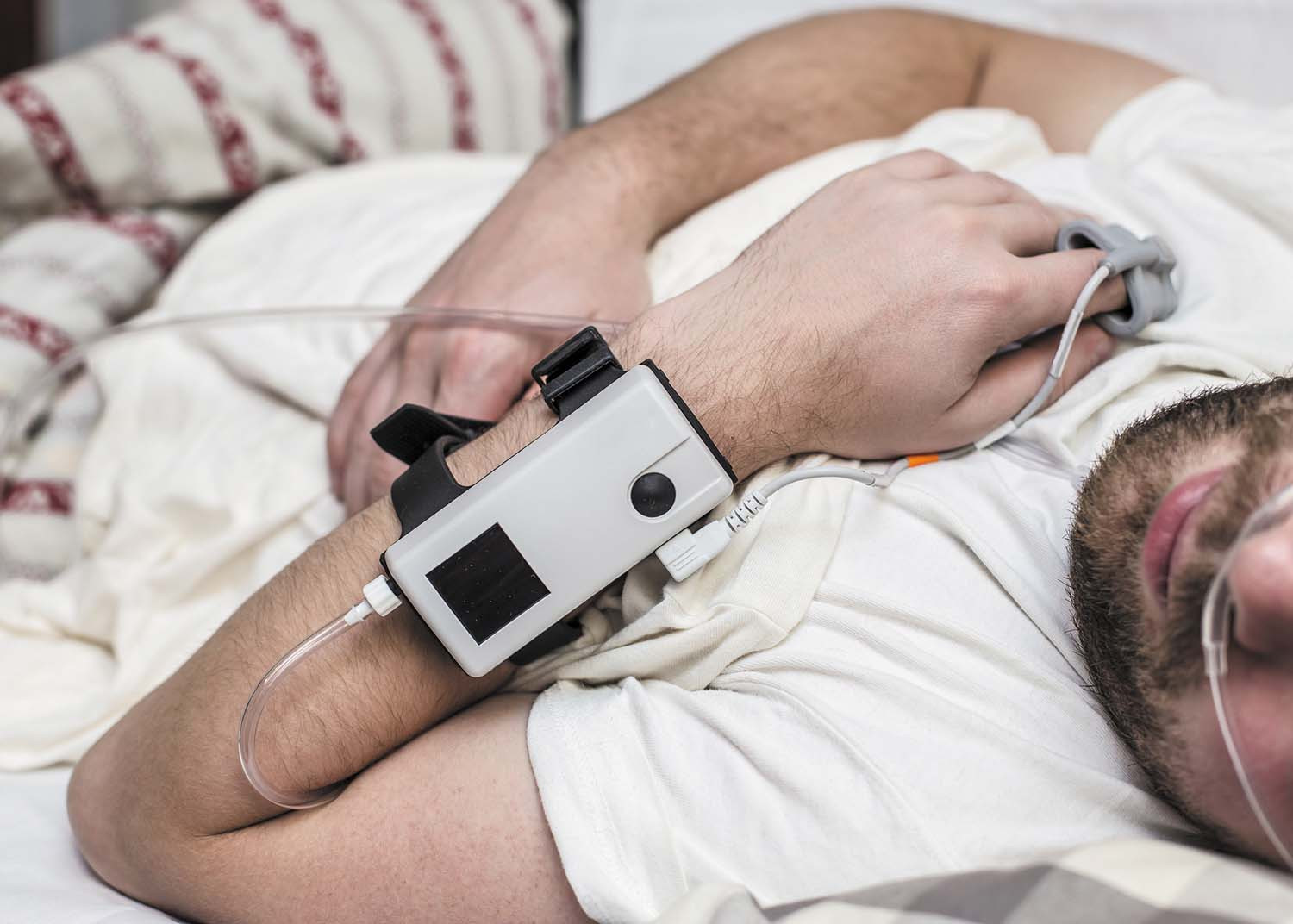Trending now: Home sleep tests
The popular test is easy to take and can help you uncover a potentially dangerous sleep condition. But it comes with caveats.
- Reviewed by Anthony L. Komaroff, MD, Editor in Chief, Harvard Health Letter; Editorial Advisory Board Member, Harvard Health Publishing

Want to find out if the snoring, gasping, or choking sounds you're making during sleep are actually signs of obstructive sleep apnea? Until recently, you would have had to go to a sleep lab, get hooked up to dozens of sensors, and spend the night. Now, thanks to the miniaturization of sophisticated technology, you can conduct a basic sleep test in your own bed. "Home sleep tests are often the preferred approach to detect sleep apnea, not just by doctors, but also by insurance companies. Many are no longer covering in-lab studies, which cost thousands of dollars. A home sleep test costs a few hundred dollars, and it's usually covered," says Dr. Sogol Javaheri, a sleep specialist at Harvard-affiliated Brigham and Women's Hospital.
However, she cautions that you can't always rely on results from a home test.
What's involved?
You need a prescription for a home sleep test. You can talk to your primary care physician or a sleep specialist about it. Or you can order a home sleep test online from any number of companies. You visit a company's website, purchase the test, and talk to a company-affiliated doctor via telemedicine. The doctor can prescribe the test if it's right for you.
Dr. Javaheri has reservations about arranging a test online. "You won't know if it's the best-quality sleep test or the best interpretation of the results. A lot of those companies just send a standardized blurb about the results," she says.
Taking the test
Either you will pick up your test from your doctor's office or the test will be delivered to you. It involves wearing a few small sensors overnight, typically
- a nasal cannula, a loop of thin tubing worn under the nose to measure your breathing patterns
- a pulse oximeter, a small gadget placed on the finger to measure oxygen levels in your blood
- a chest strap, an adjustable belt that measures the effort or movement your body is making to breathe.
- Each of those sensors plugs into a small data monitor, which is worn on the chest strap.
A newer type of home sleep test has even less equipment. The data recorder is worn on the wrist, like a watch. It connects to a pulse oximeter and a small chest sensor. The chest sensor measures breathing effort and snoring sounds.
Test results
While it's not as detailed or as accurate as an in-lab sleep study, a high-quality home sleep test yields fairly reliable results. "You have an 80% chance that the test will be right," Dr. Javaheri says. "But we compare the results with your symptoms to help make sure the results are accurate and to determine the best treatment options."
If the test results don't match your symptoms—for example, if you have sleep apnea symptoms and a negative test result — your doctor will have to investigate further. "We'll look at the context of the results and the circumstances of the test. It could be that you had nasal congestion on the night of the test, you were breathing through your mouth, and the nasal sensor didn't pick that up," Dr. Javaheri says. "If we have strong suspicions that you have sleep apnea, we'll need to schedule an in-lab study."
What is obstructive sleep apnea?
Obstructive sleep apnea is a condition marked by 10- to 30-second pauses in breathing during sleep. Those pauses are called apneas and can occur hundreds of times per night. The breathing disruptions occur when the airway in your nose or throat becomes partially or completely blocked by large tonsils, a large tongue, or too much tissue in the airway. Untreated obstructive sleep apnea increases the risk for high blood pressure, heart disease, stroke, daytime sleepiness, and car accidents. Image: © Blueastro/Getty Images |
Should you consider a home test?
The tests aren't for everyone. People with a serious chronic condition, such as heart failure or a breathing disorder, may need additional data from an in-lab study to help determine treatment. For people who don't have serious chronic conditions, a home sleep test can be a game changer.
"If you have a straightforward case, it's the best way to go," Dr. Javaheri says. "It's cost-effective, and it's more comfortable than an in-lab study. And since you are doing the test at home, it is more likely to capture your natural sleep habits."
Image: © koldunova/Getty Images
About the Author

Heidi Godman, Executive Editor, Harvard Health Letter
About the Reviewer

Anthony L. Komaroff, MD, Editor in Chief, Harvard Health Letter; Editorial Advisory Board Member, Harvard Health Publishing
Disclaimer:
As a service to our readers, Harvard Health Publishing provides access to our library of archived content. Please note the date of last review or update on all articles.
No content on this site, regardless of date, should ever be used as a substitute for direct medical advice from your doctor or other qualified clinician.

















